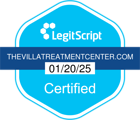Learning to overcome self harm urges can be challenging when it becomes an ingrained behavior. Self-destructive tendencies stem from a sense of disconnect between the self and experiences happening which feel out of one’s control. Find out how to curb urges toward self harm and seek positive, healthy coping mechanisms and strategies.
Why Self Harm Happens
Self-destructive behavior is often a nonverbal way to communicate a deeper need within a person for help. Unresolved feelings of guilt, shame or self-blame from past trauma and neglect can leave a person vulnerable to believing self told lies about worthiness and acceptance in the outside world. When a person lacks self-compassion, it becomes more possible to do harm to oneself. Once a person understands the motivation behind self-harming mechanisms, it is more possible to seek appropriate help for the urges.
Stop the Urge
A person does not naturally make decisions to cause self harm unless it is to avoid painful circumstances or memories. Making harmful life choices may happen because a person never modeled a way to feel worthy of good choices or showed how to be living in a more positive, honest way which is more congruent with a true image of the self. To stop from self harming, it helps to be open to the idea that it is not one’s own fault. Painful life experiences are hidden under the layers and scars which need tending to, support and healing of sexual, emotional or physical manifestations of abuse.
Helpful Tools
The following are some tools to help guide a person through understanding what causes self-harm and how to receive healing:
- Learn about self-destructive behaviors, what it means and how they begin. Connect with resources and people who can help outline the reasons for self-harm including spiritual guides, resources, materials and counselors who can offer treatment options.
- Figure out the steps to healing. A mental health professional or licensed counselor can take a positive, healthy approach to supporting a person through necessary steps towards health and healing. Treatment options vary depending on a multitude of factors but may be helpful in developing a self-care practice to move away from self harm towards recovery.
- Find hope in the belief each person is worthy of love. Each person experiences life differently and healing is possible. Connect to emotions and behaviors which support healing from past trauma and stress. Fit the pieces together and find a better way to heal past hurt.
Letting go of self-harm practices can feel challenging, but there is healing in the challenge. Waiting on the other side of self-harm is self acceptance, self love and hope for a better future without harm. When a person experiences healing, harm is no longer a necessary part of one’s day-to-day life. Recovery will feel lighter with periods of joy rather than sorrow because past hurt is moving into the healing stage and hope is finally on the horizon for brighter days ahead.
If you self-harm or know someone who does, today is always the best day to start over. Call us to find out how we can help you or a loved one begin again, start afresh and find healing in recovery from self-harm practices.







